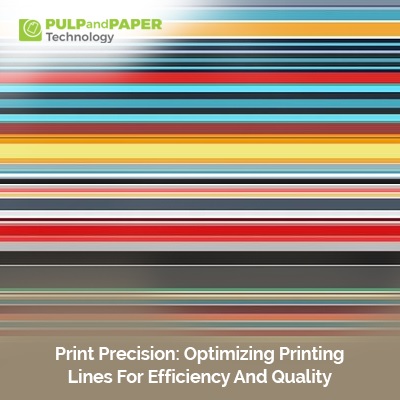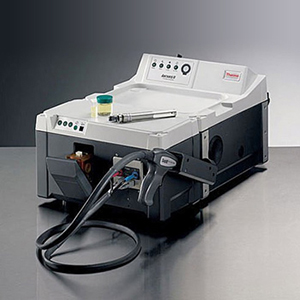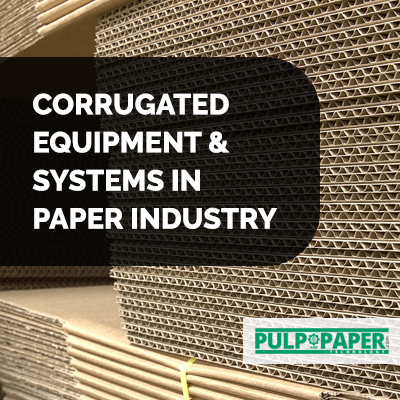Articles
Print Precision: Optimizing Printing Lines for Efficiency and Quality

In the realm of modern printing, precision is paramount. Whether it's producing newspapers, magazines, packaging materials, or promotional materials, optimizing printing lines for efficiency and quality is crucial for meeting industry standards and customer expectations. This article delves into the key aspects of print precision, including technology advancements, workflow optimization, quality control measures, and the impact of optimized printing lines on the overall printing industry.
Introduction to Printing Lines Optimization
Printing lines refer to the series of processes and equipment involved in printing operations, from prepress preparation to post-press finishing. Optimizing these lines involves streamlining workflows, implementing advanced technologies, and ensuring consistent quality throughout the printing process. The goal is to achieve maximum efficiency, minimize waste, and deliver high-quality printed products to customers.
Technology Advancements in Printing
Advancements in printing technology have revolutionized the industry, enabling faster turnaround times, higher resolutions, and greater flexibility in printing capabilities. Digital printing, for example, has emerged as a versatile and efficient option for short print runs, variable data printing, and on-demand production. Wide-format printers have expanded the possibilities for large-scale graphics, signage, and packaging.
Workflow Optimization Strategies
Efficient workflow management is essential for optimizing printing lines. This includes digital file preparation, color management, job scheduling, and equipment maintenance. Automation tools such as workflow software and job tracking systems help streamline processes, reduce errors, and improve productivity. By optimizing workflows, printing companies can meet tight deadlines and customer demands more effectively.
| Also Read: Innovations in Printing Lines for the Pulp and Paper Industry |
Quality Control Measures
Maintaining consistent print quality is a top priority for printing operations. Quality control measures encompass color accuracy, image sharpness, paper handling, and finishing techniques. Calibration tools and color management systems ensure that printed outputs match the intended design specifications. Regular maintenance of printing equipment, such as cleaning printheads and replacing worn parts, is also critical for achieving optimal print quality.
Impact of Optimized Printing Lines
Optimizing printing lines has a significant impact on the overall printing industry. It improves operational efficiency, reduces production costs, and enhances competitiveness in the market. By investing in advanced printing technologies and workflow optimization strategies, printing companies can attract more clients, deliver superior products, and adapt to changing customer preferences.
Challenges and Future Trends
Despite the benefits of optimized printing lines, challenges such as rising material costs, environmental concerns, and digital transformation continue to shape the industry. Addressing these challenges requires ongoing innovation, sustainability initiatives, and strategic partnerships. Future trends in printing may include advancements in 3D printing, sustainable printing practices, and personalized printing solutions.
Advanced Techniques in Print Precision
Achieving print precision goes beyond basic optimization strategies. Advanced techniques and technologies play a crucial role in enhancing printing quality, efficiency, and versatility. Let's explore some of these advanced elements that contribute to the optimization of printing lines.
1. Variable Data Printing (VDP)
Variable Data Printing allows for personalized content within printed materials. This technique is invaluable for targeted marketing campaigns, personalized communications, and customized products. By integrating VDP capabilities into printing lines, companies can deliver highly relevant and engaging printed materials tailored to individual preferences and demographics.
2. Color Management Systems
Color accuracy is paramount in printing, especially for branding materials and high-end graphics. Advanced Color Management Systems ensure consistent and accurate colors across various printing devices and substrates. These systems use color profiles, calibration tools, and spectrophotometers to maintain color fidelity and achieve precise color matching, even in complex printing workflows.
3. Digital Embellishments
Digital embellishment technologies add tactile and visual enhancements to printed materials, such as foil stamping, spot varnishes, and textured effects. These embellishments enhance the overall appeal of printed products, making them stand out and adding value to the final output. Integrating digital embellishment capabilities into printing lines elevates print quality and customer satisfaction.
4. Inline Inspection Systems
Inline inspection systems employ advanced imaging technologies to detect defects, ensure print quality, and automate quality control processes. These systems can identify issues such as misregistration, color variations, and print defects in real-time, allowing for immediate corrective actions and minimizing waste. Integrating inline inspection systems into printing lines enhances efficiency and reduces production errors.
5. Cloud-Based Workflow Solutions
Cloud-based workflow solutions offer scalability, collaboration, and remote access capabilities for printing operations. These solutions streamline job management, digital asset storage, and collaboration among team members and clients. By leveraging cloud-based workflows, printing companies can improve communication, optimize resource allocation, and adapt quickly to changing customer requirements.
6. Sustainable Printing Practices
Environmental sustainability is a growing concern in the printing industry. Advanced techniques such as eco-friendly inks, recycled substrates, and energy-efficient printing equipment contribute to sustainable printing practices. Implementing sustainable practices in printing lines not only reduces environmental impact but also enhances brand reputation and attracts eco-conscious customers.
Conclusion: The Future of Print Precision
In conclusion, print precision is a critical aspect of modern printing operations, with a focus on optimizing printing lines for efficiency and quality. By leveraging technology advancements, implementing workflow optimization strategies, and maintaining rigorous quality control measures, printing companies can achieve higher productivity, reduce costs, and deliver exceptional printed products to meet customer expectations in today's dynamic printing industry landscape.
The convergence of advanced techniques, technologies, and sustainability initiatives is shaping the future of print precision. Printing lines optimized with advanced capabilities can deliver exceptional quality, personalized experiences, and environmental responsibility. By embracing these advanced elements, printing companies can stay competitive, meet evolving customer demands, and drive innovation in the dynamic landscape of print media.








